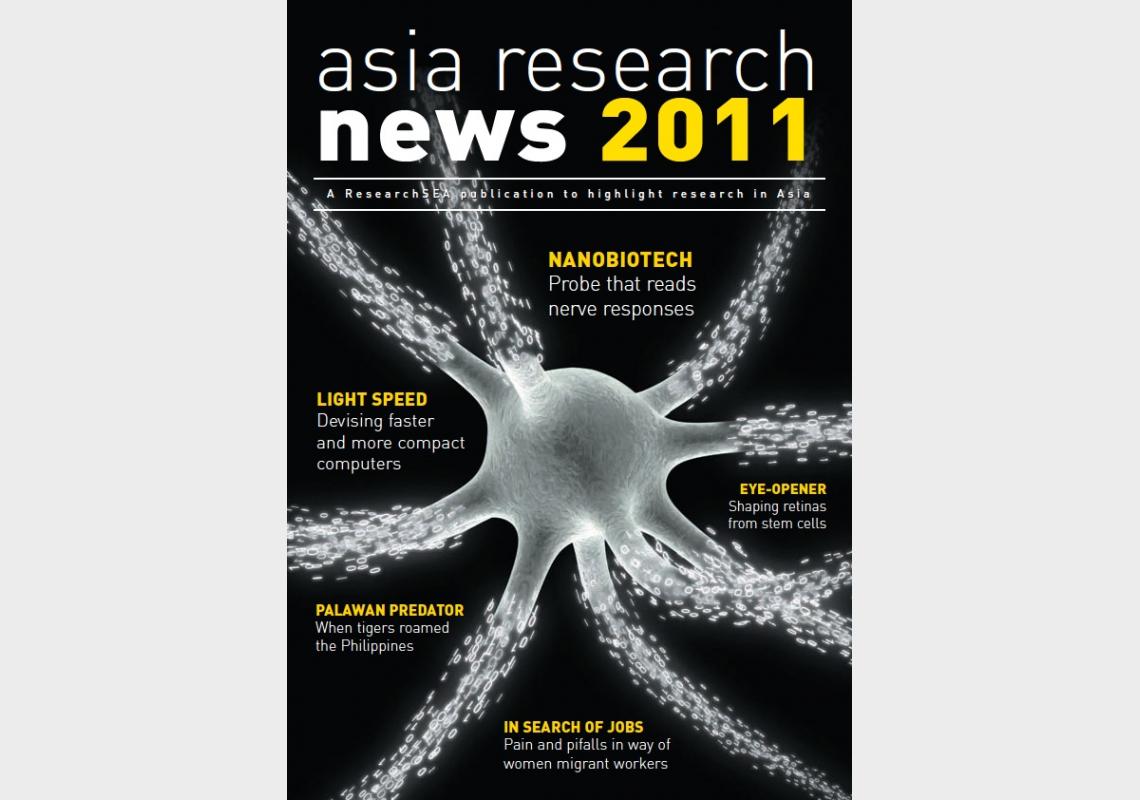Committed to facilitating dissemination of Asian research and its global impact, ResearchSEA’s latest publication highlights developments across the research spectrum.
Malaysia’s Universiti Technologi MARA, for example, has developed a computer programme which allows identification of cell types in honey bee combs. The software comes with high commercial value as it allows breeders to easily assess the health of bee colonies without prior knowledge of bee farming.
Improving productivity is also high on the agenda for rubber plantation holders in Thailand. To deal with the low productivity resulting from years of overexploitation Prince of Songkla University has created a new tapping system. Known as the “Double Cut Alternative” this technique increases latex yields by 22 per cent.
At Universiti Putra Malaysia, nitrogen-based fertilisers derived from organic wastes are being modified to reduce nitrogen seepage. Up to 60 per cent of nitrogen in urea can be lost as ammonia, resulting in air, soil and water pollution as well as reduced crop output. Urea, which was modified with acids, however, was found not to leach ammonia. It has been estimated that a saving of $400 could be made using modified urea for everyone tonne of urea used in agriculture.
At the University of the Philippines Diliman a new type fish has been bred. Traditionally a freshwater fish, the new breed of tilapia is tolerant to salt water and likely to become an important source of fish in areas where freshwater habitats are rare. Meanwhile the WorldFish Center has set up a project which encourages the collation and sharing of information on coral reefs, often referred to as the “rainforests of the sea”. The free database includes access to over 10,000 reef ecosystems covering over 100 countries. Also mapping biodiversity are researchers from Universiti Malaysia Sarawak who have identified 19 new species of plant on the island of Borneo.
Improving catalysts for vehicle exhausts and developing technology to convert the chemical energy in fuels, such as petroleum gas into electrical energy are just some of the initiatives driven forward by Japan’s National Institute for Materials and Science (NIMS). Also in pursuit of a greener planet are researchers from the Agency for Science, Technology and Research (A*STAR) in Singapore. They are searching for more efficient ways to convert bioethanol into useful products, such as fuel and plastics, while simultaneously minimising waste. By modifying E.coli bacteria to over-express an enzyme needed to digest plant material, they have found an easy and cost effective method of increasing the ethanol yield.
A team from Toyohashi University of Technology in Japan have established a way of not just detecting neural activity, but also controlling it via nano-sized biological machinery. Using a new family of chemicals which are photoisomerisable, meaning that the molecules change their structure under exposure to light, they found a way to optically control neural activity, remotely and reversibly.
Researchers at RIKEN, by contrast have succeeded in growing eye-like structures from mouse stem cells. The results are very promising for those suffering from retinal degenerative disorders and it is hoped that the techniques will open up new applications in regenerative medicine.
At Hong Kong Polytechnic University researchers sought to improve health on the macroscale. They implemented a transitional care model (ETCM) designed to increase the competency of healthcare professionals caring for adolescents and the elderly. Using the ECTM not only was there lower readmission of patients in the study group and therefore a significant cost saving, but patients’ quality of life was also improved compared to those in the control groups.
Research in Asia clearly continues to boom. Indeed, Canada’s International Development Research Centre is funding 16 independent policy research establishments in Asia to bolster the influence of research institutions in national policy making. As part of the initiative a group of international donors have committed $21 million in multi-year funding until 2014.
The developments listed here are just the tip of the iceberg. To read a complete review of the exciting research being conducted across Asia, do read the complete Asia Research News 2011 magazine by clicking on the PDF link below. We welcome your feedback!
For enquiries, please contact:
Dr Djuke Veldhuis
Research Communicator
ResearchSEA – Asia Research News
www.researchsea.com
Tel: +44 (0) 1223 276 227
Fax: +44 (0) 8706220887
Email: [email protected]



